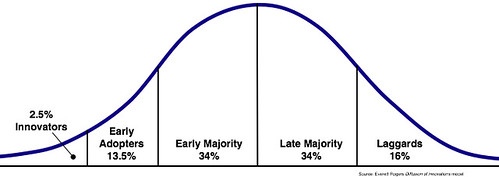The best way to differentiate your company and increase pricing power is to position your products and services an investment, not an expense.
Obvious, right? Another brilliant, over-used business cliché straight from a MBA course.
The problem is that while most companies would agree with this statement, few actually understand it. And fewer still actually pull it off.
As a result, each company looks, sounds and more-or-less does the same exact stuff as their competition.
(Or at least, that’s what it looks like from their customer’s point of view).
Here’s why, and how you can start to fix it.
Why Does Your Company Compete on Price?
Most companies assume that the #1 customer criteria for their products or services is price.
But is it? Really?
Sure, all customers are interested in price at some level. But our job is to figure out why, and to what degree.
Because when you dig a little deeper, you might be surprised at the root cause.
For example, a prospect might say price is important because…
- They are truthfully a low-priced consumer (in which case they’re a terrible prospect and you should run away immediately)
- Your product/service offering is truly commoditized (in which case you should get out of that business immediately)
- They’re getting pressure from other stakeholders and need to make a quick decision. You haven’t proven how your company will deliver better results than the competition, so they see you all as commodities (even though you’re not). And they simply don’t know any better and don’t completely understand how your products and services are better than everyone else. Based on a combination of these factors, they go with the low price option.
While you can’t do anything about the first two answers (besides run), the last option is completely your fault.
But the good news, is that it’s also completely avoidable.
McKinsey described in a recent article about how B2B companies especially make this mistake of “talking past their customers”.
“Honest and open dialogue, which customers considered most important, was one of the three themes not emphasized at all by the 90 companies in our sample.”
If your customer’s don’t understand how your product or service is better – on a simple, non-jargony basis – then you’re essentially forcing them to lump you in with the competition.
If you can master this step — of differentiating your business and explaining how your products and services are better — then you’ll be ahead of the competition.
Unfortunately, figuring out the right way to speak with the right customer is not always that simple and straightforward.
Why You Should Alter Your Messaging to Match Your Prospect
The appropriate marketing messaging used on instant messaging apps has everything to do with the people you’re trying to reach.
The trouble is that while selling one way to one person might work brilliantly, the same approach for another person might fail miserably.
How can you tell the difference?
If your business is remotely affected by technology advancements (so, everyone), then one way is through analyzing groups of people based on where they might sit on the technology lifecycle adoption curve.

With technology products or services, you’ll quickly find out that Early Adopters purchase for MUCH different reasons than the Early or Late Majorities.
Early Adopters are typically “industry insiders” who will be most interested in technical specs and innovative features.
But if you try that with the rest of the market, you’ll talk past them. Because most in the “Majority” could care less about how advanced your solution is. The context for the conversation will be all wrong.
Instead, you need to (a) quickly recognize who you’re dealing with, and (b) alter the context of the conversation.
If your prospect is an Early Adopter or “industry insider”, then full speed ahead with explanations of your technical specs and demos of innovative features.
But if you’re speaking to others – especially those in the Early or Late Majorities – then you need to transfer those features into benefits. And transform those benefits into concrete outcomes and end results.
Instead of, “Here’s what our product/service can do…”, it’s “Here are the results you can get from our product/service…”.
5 Steps to Figure Out Why Your Customers or Clients REALLY Buy
Mastering marketing messaging mistakes (sorry, I like alliteration) comes down to figuring out the main purchasing motivations and psychographic reasons of why people buy.
Step #1: First, you need to identify and focus on the prospects that believe your worldview (that your products/services are an investment), because a large part of the market won’t.
Step #2: Then you need to find the trends and commonalties among these people. Maybe it’s the industry vertical they’re in, or maybe it’s the company size. Many times, it will be the underlying purchasing occasion (i.e. the specific reason prompting them to pick up the phone and get in touch with you) or specific motivation (i.e. cost savings).
Step #3: Once you know and understand this, you can begin to test it using qualitative and quantitative data. For example, start with quick secondary research like industry surveys for the most important reasons people said they wanted your product or service.
Step #4: Next, you need to identify the root causes behind why respondents say they need your product or service. Toyoda’s “5-Whys” becomes a helpful model in this case.
Step #5: Last but not least, conduct your own primary research through short surveys and in-depth interviews with your own customers and clients. Validate or disprove your hypotheses quickly. And then elicit surprising answers so you can come up with new ones.
Eventually you want to be able to identify exactly how “feature XYZ” translates into a specific number or percentage of additional revenue or money saved (thus providing you with a crystal-clear ROI). Or how much weight someone will lose or how many inches their vertical jump increased.
Basically, you’re looking for the before and after picture to show clear evidence of the value in what you provide.
How “Understanding” Dictates Marketing Success
The marketing results your company experiences are limited based on your understanding and application of these underlying reasons people buy from you.
For example, if the messaging on your Facebook updates or email campaigns don’t resonate with your customers pain points, fears, ambitions and/or aspirations, then you’ll see poor responses rates and conversions will suffer. Even though there might be nothing wrong with those promotional activities, or your implementation per se.
So measure twice, cut once.
Spend a little more time, and little more money up-front on customer research before rushing headlong into kick-starting your next promotional strategy.
Prioritize listening and understanding initially, so that the resources you’re going to commit over the next few weeks, months and years will deliver accordingly.



